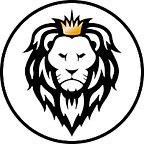Introduction to Non-Fungible Tokens (NFTs)
With record-breaking sales, such as $62,000 for a crypto game card, or $170,000 for a kitty collectible, NFTs are soaring in popularity.
NFTs stand for Non-Fungible Tokens. “Non-fungible” sounds complicated, but it’s actually a simple concept to learn:
Any asset that is identical to another, and can be exchanged for it 100% of the time, is a fungible asset.
1 dollar bill can be exchanged for another 1 dollar bill. 1 share in a company can be exchanged for the same 1 share.
Then, any asset that’s not identical to anything, and can’t be exchanged for a similar asset 100% of the time, is a non-fungible asset.
The Mona Lisa can’t be exchanged for a replica. A Twitter username can’t be exchanged for the same Twitter username, because only one exists.
In the real world, an asset being fungible or non-fungible sometimes depends on the person asked. Take for example a wedding ring. If you were to ask a married person to change his ring for another one from the same factory and the same shop, he would probably say no, because, in his eyes, that ring is unique and personal.
Non-fungible assets are not black &white, and that’s what makes them unique.
The Internet opened up new non-fungible assets to the world, such as digital art, domain names, social media handles, and many more, but claiming ownership, transferring those assets, and buying & selling is a complicated process. That’s why NFTs were born. Basically, they are representations of non-fungible assets in the form of tokens.
Tokens on a blockchain have many different advantages, such as interoperability, programmability, liquidity, are easier to trade, traceability, etc.
The main points of advantage of NFTs are:
- They represent unalterable ownership.
- They are easier to trade than other non-fungible assets because representing something as a token creates a layer of abstraction.
- Tokens can be programmed and can work on many different protocols and applications, opening new cool use-cases for non-fungible assets.
- Tokens contain all the information regarding the asset, so authenticity is easier to prove.
When you put non-fungible tokens on a blockchain, a new world of possibilities opens. Suddenly, digital art becomes viable, because ownership is easy to prove. You can start doing cool stuff with loyalty points, or buy & sell royalty-bearing assets such as music or films.
Many experts in the NFT space believe that digital art and gaming will be the first steps towards achieving mainstream adoption, followed by the entertainment industry and other industries like real estate, insurance, etc.
NFTs represent things that are unique, that are not like anything else in the world. If you combine uniqueness with blockchain, you get amazing possibilities.
DeFi + NFT is a trend that we will explore soon. Decentralized protocols offer NFTs new capabilities in terms of interoperability, meaning your NFTs can be transferred between multiple marketplaces, games, or they can be minted through yield farming offerings 😉
In the next blog posts, we are going to talk further about NFTs, their use-cases, and why they are such a cool and hot topic at the moment.
